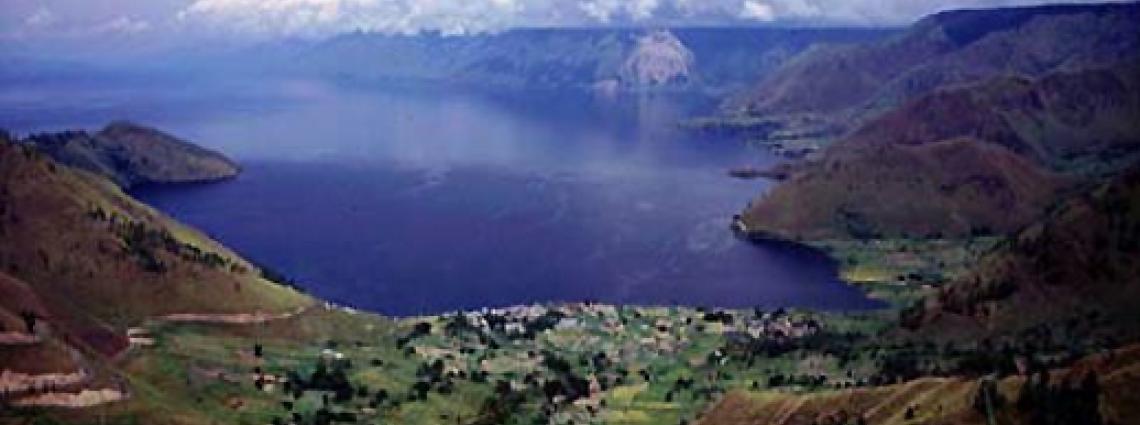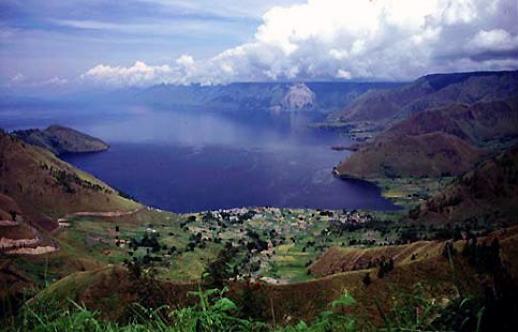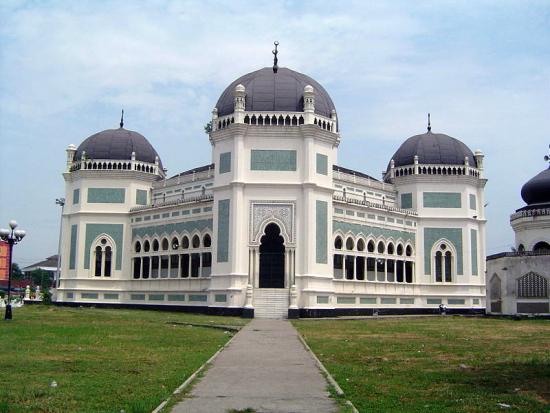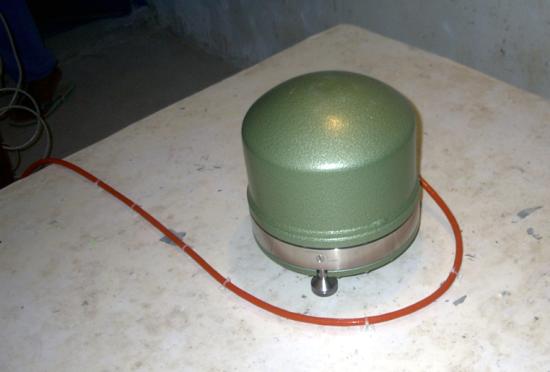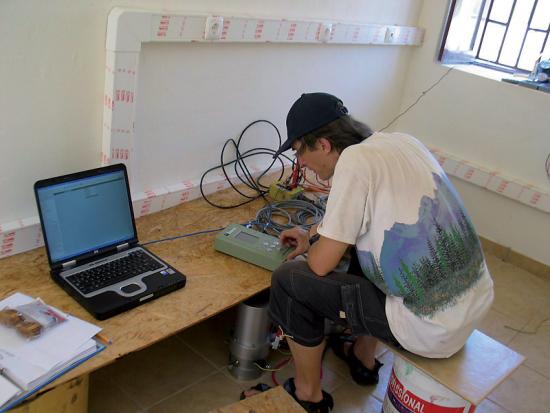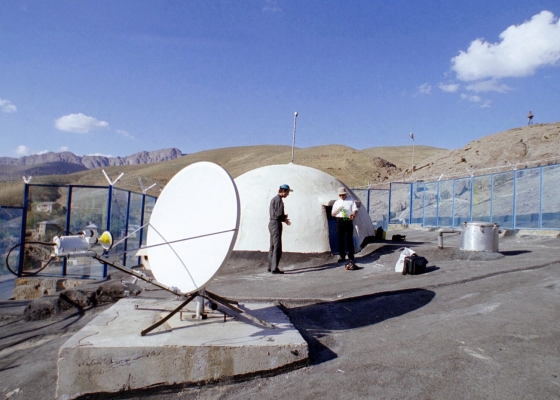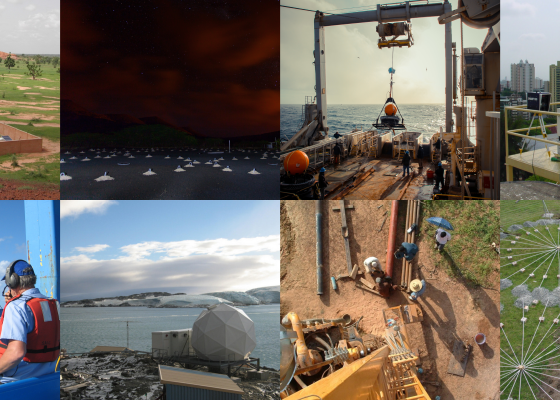AS43, Parapat, Indonesia
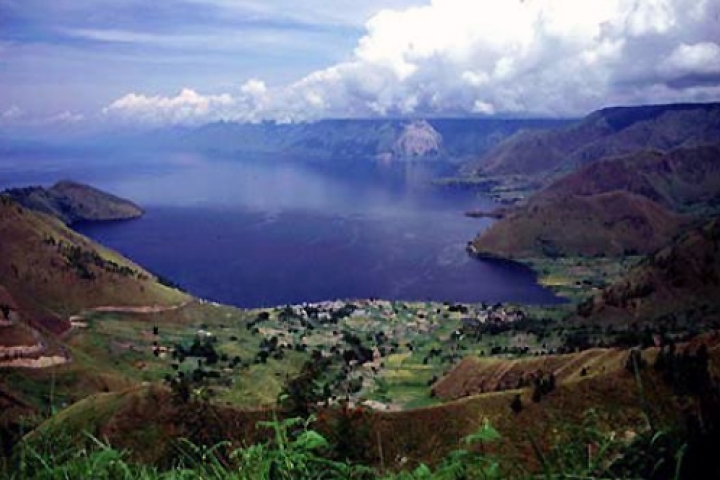
Parapat, Indonesia
Sumatra (Parapat)
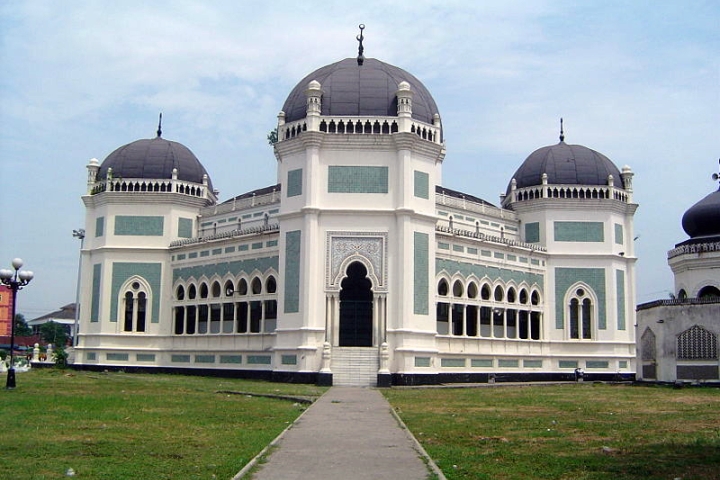
Grand Mosque of Medan, North Sumatra
Geography, Geology and Natural Disasters
Sumatra extends almost 1,800 km from northwest to southeast, and is located on both sides of the Equator. The maximum width is 435 km. The two main geographical regions are: the swampy plains in the east and, in the west, the Barisan Mountain chain that forms the backbone of the island. The Great Sumatran Transform Fault runs the entire length of the island. Pressure on this fault increased dramatically since the 2004 earthquake, and seismologists fear a major earthquake will occur soon. The fault ends directly below the city of Banda Aceh. The active volcano, Mount Kerinci, is the highest point at 3,805 m. Volcanic activity in this region is responsible for this area’s fertility and stunning scenery, especially around the Lake Toba where the town of Parapat is located.
On 26 December 2004, northern and western Sumatra, particularly Aceh province, were devastated by a 15 m high tsunami following a 9.2-magnitude earthquake in the Indian Ocean. The death toll exceeded 170,000 in Indonesia alone, primarily in Aceh. In 2005 an 8.7 magnitude aftershock of the previous earthquake occurred. After the 2004 tsunami, the Preparatory Commission of the Comprehensive Nuclear-Test-Ban-Treaty Organization (CTBTO) decided to provide relevant International Monitoring System (IMS) data to tsunami warning centres in the region on a provisional basis. With the help of the reliable provision of high quality IMS data in almost real-time, these tsunami warning centres are now able to issue warnings several minutes earlier.
IMS Station Location
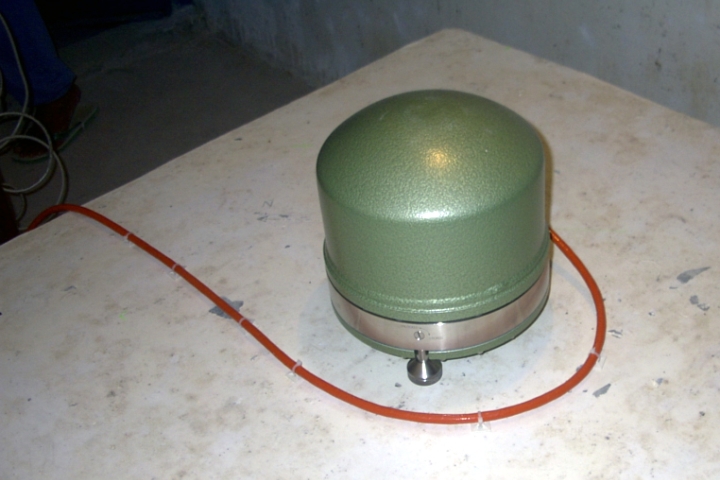
Auxiliary seismic stations are mandated to provide data to the IDC upon request only.
Station Profile

Officer performing certification measurements.
